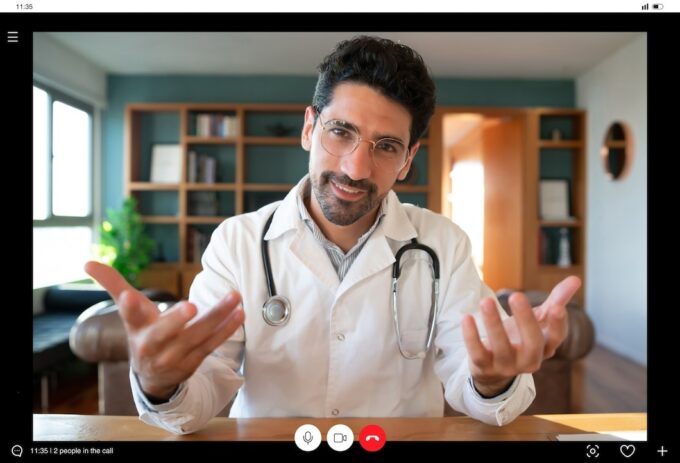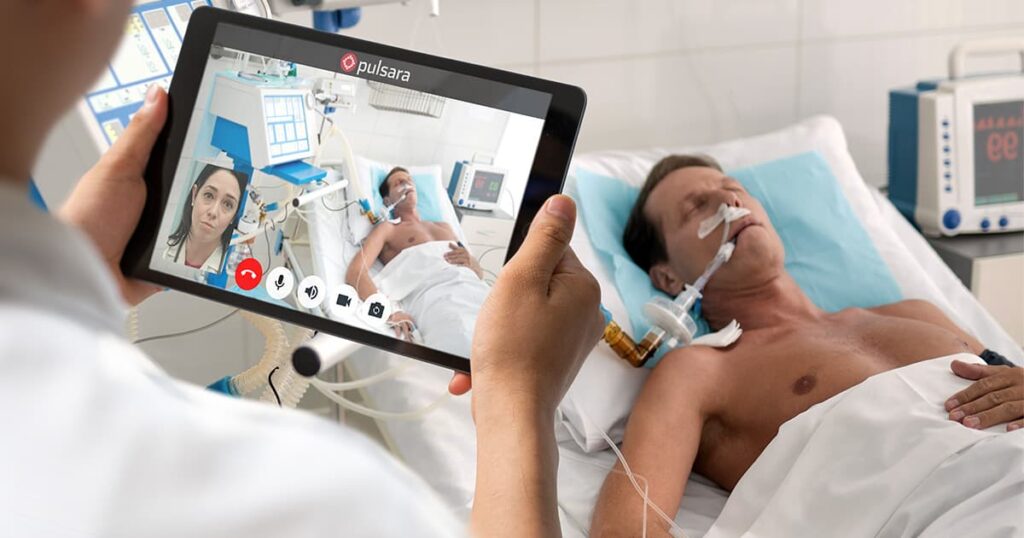When it comes to healthcare access, quality and delivery, there’s a significant high-tech revolution innovating the traditional method of patient treatment. Welcome to the era of telehealth—an innovative way to deliver health information, education and services remotely.
But is there a gap in this innovative healthcare method? This article takes an in-depth look at where rural patients stand when it comes to telehealth. Are they enjoying the same benefits or do they get left behind? Read on and get into the discussion!
The Definition of Telehealth

Source: freepik.com
Telehealth leverages digital solutions to distribute health services and information remotely. This allows patients convenient access to care. Telehealth utilizes means like video conferencing with physicians, text alerts for medication schedules, electronic transfer of test results, and more.
By removing geographic and time barriers, telehealth aims to streamline and simplify healthcare delivery for both patients and providers.
The Essence of Telehealth
People often associate telehealth strictly with virtual appointments. Yet, its essence goes beyond that realm. The idea behind it is more towards granting accessibility and convenience around public health education and care.
This innovative concept eliminates geographical barriers that hinder patients from seeing their healthcare providers physically. It opens up a new scope for remote patient monitoring, thereby enabling doctors to keep taps on their patient’s well-being from afar.
Why Internet is Critical for Quality of Life

Source: digitalsalutem.com
High-speed internet is more than just an accessory – it’s becoming essential for both professional success and personal well-being. More so now with telecommuting being a growing trend, learning shifting towards digital platforms, and even doctor appointments happening online—the ability to connect virtually has become critical.
Talking about rural areas—where individuals are geographically confined—high-quality internet is critical for quality of life. Broadband significantly contributes to improving all manner of areas by increasing connectivity with the rest of the world.
Internet Role in Telehealth
The internet plays a foundational role in telehealth’s operations. Without high-speed internet, the implementation of many facets of telehealth services would be unattainable. Take an instance where real-time communication is necessary during a virtual appointment; only high-speed internet can facilitate this exchange.
To add to that, the sharing of large files like imaging scans or patients’ medical history mandates having a reliable and fast internet connection. Thus, the efficiency and reliability of telehealth are based heavily on the accessibility of quality internet services.
The Gap in Rural Healthcare

Source: freepik.com
Rural residents lack adequate healthcare access due to physician shortages, remote clinics, and limited transportation. This results in health disparities versus urban areas. Telehealth could help bridge this rural-urban divide, but rural regions often lack robust broadband infrastructure to support telehealth solutions at scale.
Multi-faceted efforts to recruit providers, invest in tech infrastructure, and incentivize telehealth adoption are key to ensuring rural communities benefit from innovations that improve care access and equity.
Rural Areas and Internet Accessibility
Undoubtedly, many rural regions still grapple with poor internet connectivity or lack of. Infrastructure challenges such as difficult terrains and low population density can translate to high installation costs. This hinders broadband infrastructure, and oftentimes discourages service providers from investing in these areas.
Yet, without reliable internet access, telehealth’s promise of transcending geographical barriers for healthcare becomes a mere ideology. Proper internet connectivity is needed to leverage the full benefits that telehealth brings to rural inhabitants.
Rural Patients and Telehealth Access
The digital divide that results from rural areas’ poor internet accessibility directly impacts rural patients’ access to telehealth services. Current data shows that rural Americans are less likely to use digital health tools, including online health information resources and online appointment scheduling, due to this divide.
Indeed, the reduced digital literacy among this population contributes to the slow adoption of telehealth. Therefore, even if technologically advanced healthcare solutions abound, acceptance and accessibility remain significant barriers for these rural inhabitants.
Broadlinc’s Impact in Whitesville, KY

Source: pulsara.com
Many initiatives are working toward bridging the gap between rural patients and telehealth accessibility. One poignant example is Broadlinc’s pilot project in Whitesville, Kentucky. This initiative helped the small community connect via high-speed internet—for free.
By doing so, they enhanced locals’ abilities to access sophisticated healthcare platforms effectively. People could schedule online doctor consultations smoothly and conveniently get subsequent medical prescription services—all thanks to a fast and stable internet connectivity infrastructure in place.
Benefits of Telehealth in Rural Communities
The transformative power of effective telehealth could be especially significant in rural communities. These advanced healthcare systems curb the necessity for long, expensive trips to hospitals or care units while making quality care accessible right at home.
Moreover, it can significantly improve healthcare standardization across communities by ensuring rural inhabitants get equitable treatment levels as their urban counterparts. Thus, telehealth helps drive better health outcomes while simultaneously promoting equality.
Barriers to Telehealth Adoption in Rural Areas
Mobile technology is transforming healthcare delivery. But rural areas often lack the broadband infrastructure necessary to support widespread telehealth adoption. Strict physician licensing rules also pose barriers, preventing doctors from providing virtual care across state lines.
Additionally, limited insurance reimbursement for telehealth makes this care financially inaccessible for rural patient populations already struggling with access issues. Though telehealth has immense potential to increase healthcare availability through mobile and digital means, regulatory hurdles along with connectivity and reimbursement limits continue hampering its implementation where it is likely needed most.
Overcoming these policy, payment and infrastructure obstacles is key for telehealth to bridge healthcare disparities and fully serve rural communities.
The Future of Rural Healthcare Access
Undeniably, there is growing recognition of telehealth’s transformative potential in rural healthcare. Thus, emerging policies are targeting the expansion and improvement of these high-tech healthcare delivery systems to rural regions.
With technological advances snowballing alongside policy support, a future where geographical location does not determine healthcare access quality seems not too far off. Despite the challenges, rural healthcare through telehealth carries an optimistic outlook.
Federal Policies and Rural Telehealth

Source: modernhealthcare.com
Federal policy makers bear a crucial role in advancing equitable healthcare through telehealth service expansions. Current initiatives like the Federal Communications Commission’s Connected Care Pilot Program aim to boost broadband internet infrastructure across rural America.
This push towards digital inclusivity aligns with the need to support comprehensive telehealth solutions across these underserviced areas effectively: a promising step towards equitable and accessible quality care.
Potential Solutions for Better Access
Increasing accessibility in deprived areas needs a multi-faceted approach. Public-private partnerships should address the lack of proper internet connection infrastructure—considered one of most significant hurdles to scale telehealth usage in rural settings.
In addition to this, providers should focus on enhancing digital literacy among rural populations while policymakers streamline regulations to favor telehealth expansion. These concerted efforts can significantly bridge gaps between rural patients and advanced medical solutions provided by telehealth systems.
This article has presented an overview of the current state of telehealth adoption in America’s rural areas – a picture that highlights both promise and challenge.
Final Thoughts
The story of rural healthcare access and telehealth is one of possibilities, promise, challenges, and urgency. As health systems and policymakers continue tailoring worthwhile tech-driven solutions to overcome these unique barriers faced by rural populations, telehealth stands as a beacon of hope.
With continued investment in broadband infrastructure, regulatory support, and targeted initiatives to increase digital literacy, a future where geographical location does not define the quality of healthcare seems achievable.



